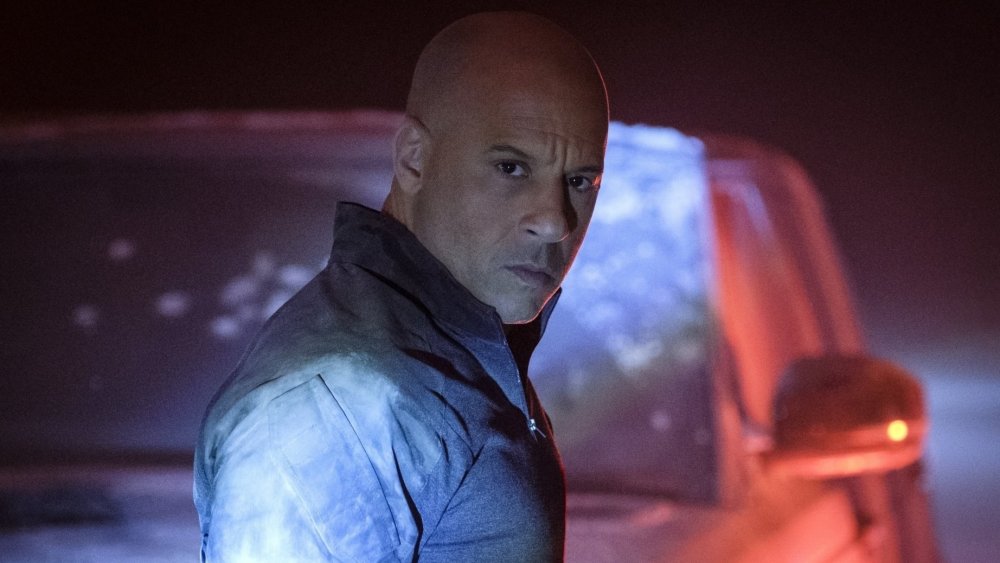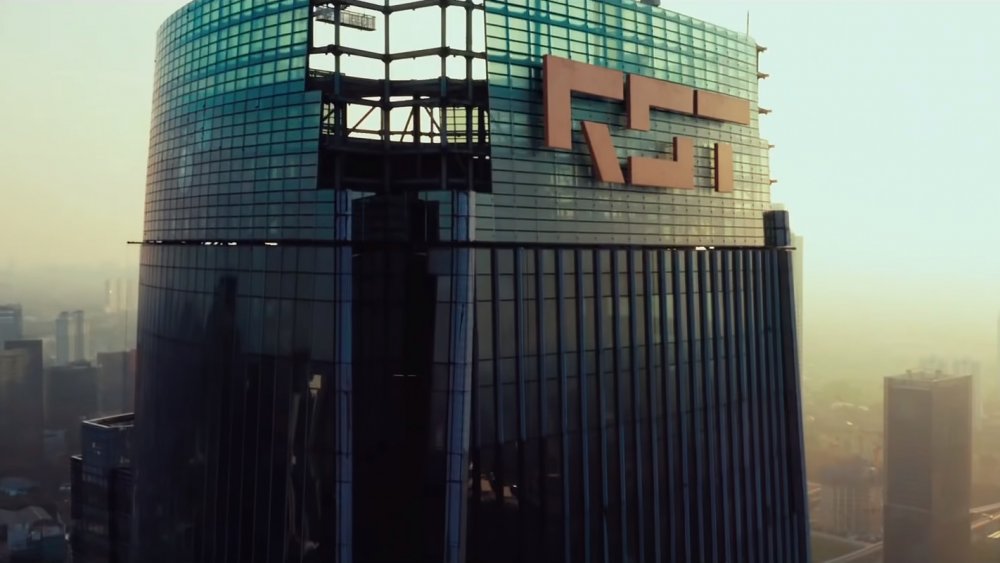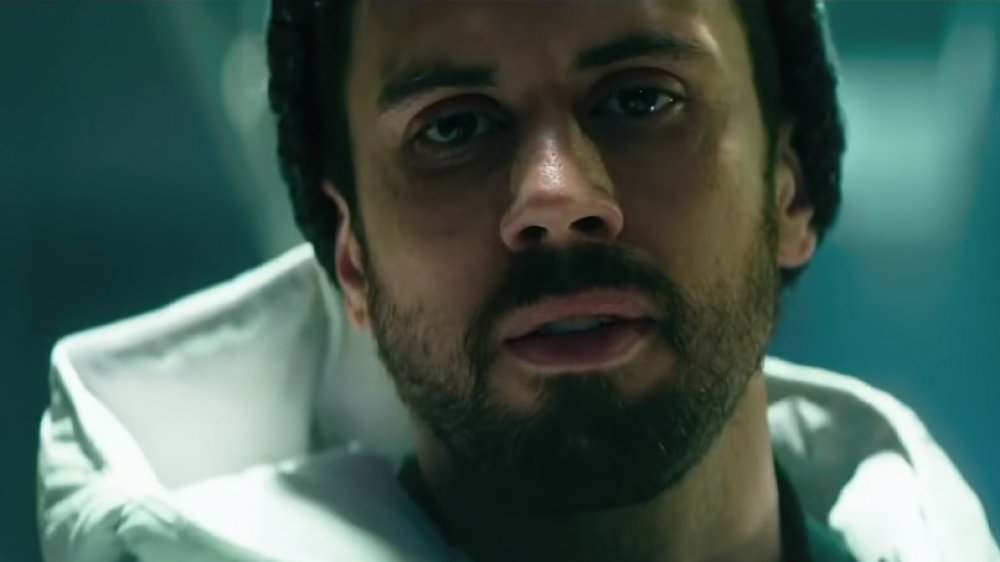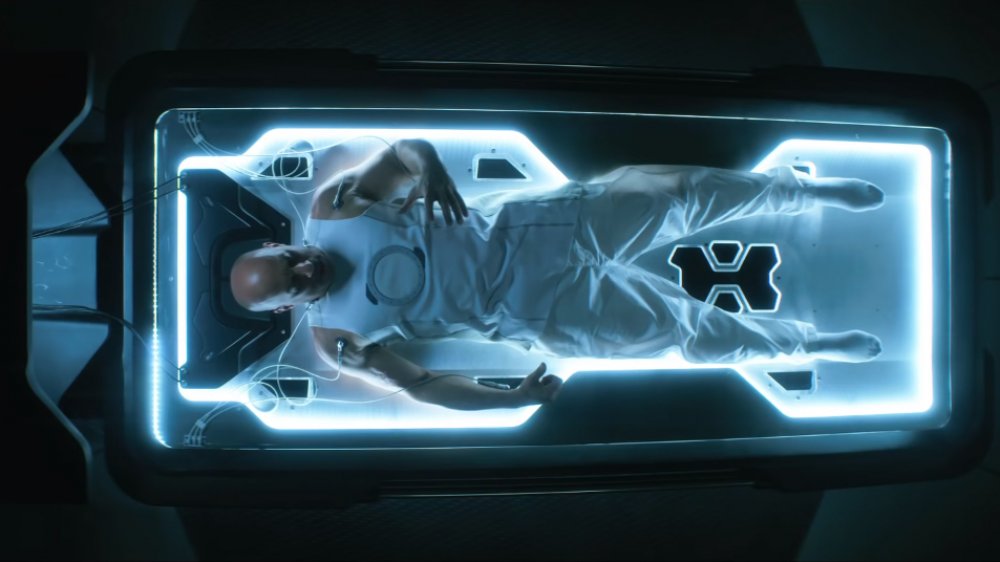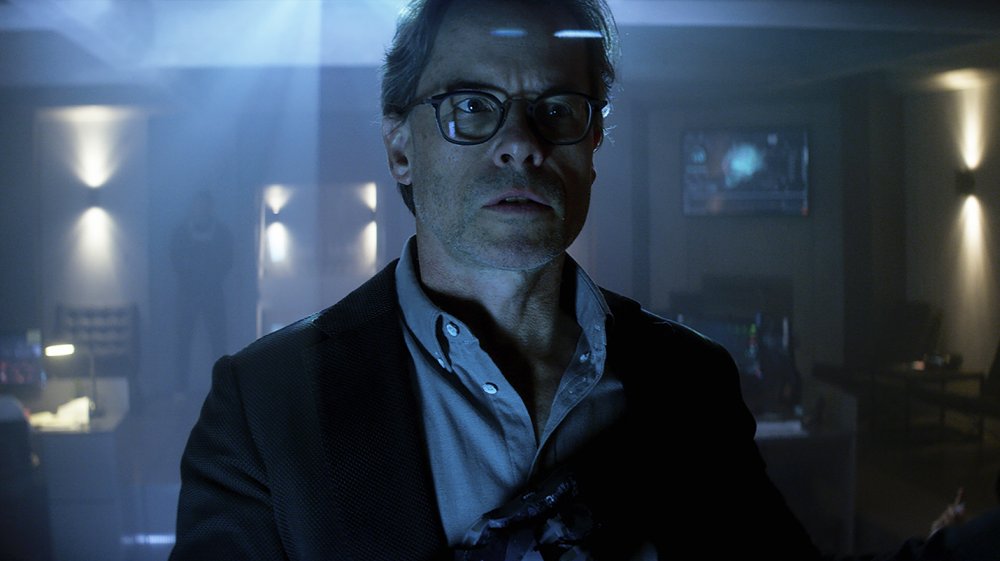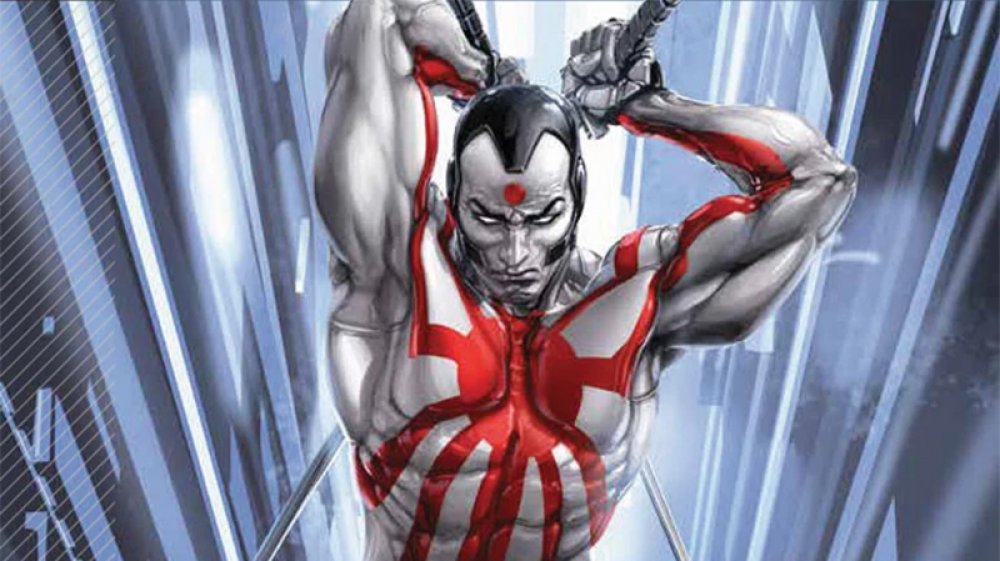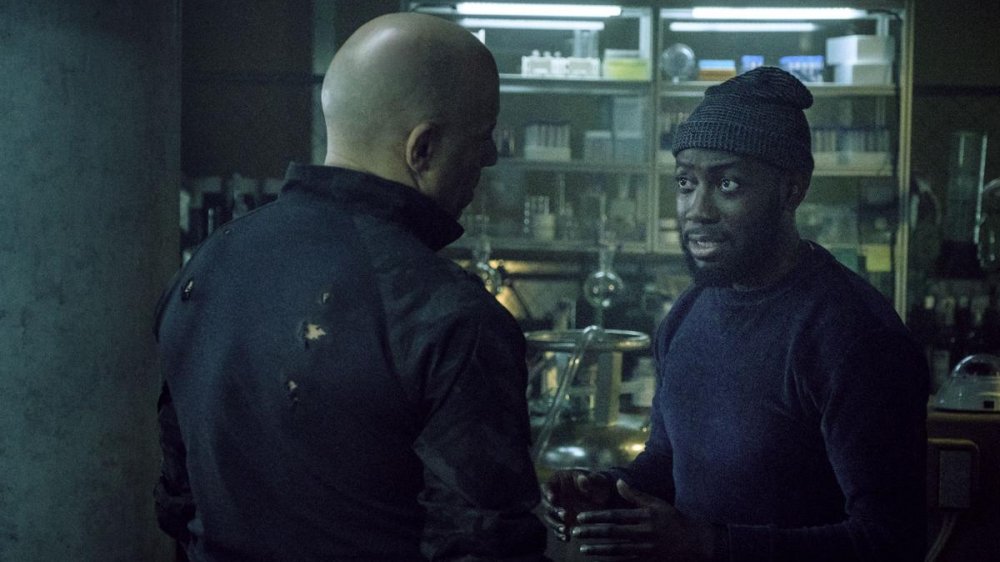Easter Eggs You Missed In Bloodshot
Bloodshot might resemble '80s sci-fi action movies more than the latest offerings from Marvel or DC, but at its heart it's still a superhero movie. Bloodshot is based on the popular character from Valiant Entertainment, who was created by Kevin VanHook, Don Perlin, and Bob Layton, and who has headlined numerous comic book series since his debut in 1992.
With its focus on technology, low-stakes storyline, and graphic violence (as graphic as a PG-13 rating will allow, anyway), Bloodshot is a very different superhero flick, but there's one area in which Valiant and director Dave Wilson were clearly inspired by Bloodshot's higher-profile peers: the Easter eggs.
Sure, the Valiant universe may not be as well-known as the MCU, but whether you're a '90s kid who grew up on Valiant's best-selling books or a newer fan, you'll find quite a few nods to the source material in the film. And if you didn't? We've got you covered. Don't worry. You won't miss a thing. (This likely goes without saying, but Bloodshot spoilers to follow.)
The company that brought Bloodshot back from the dead
In Bloodshot, the titular hero comes by his name rather simply. The top-secret program that created him is called Project Bloodshot. It fits. Not only has Ray Garrison's blood been replaced by an army of nanites, giving him superpowers, but he really likes to shoot people. Simple, but it works.
In the comics, however, the organization goes by a different name. While one reboot calls the clandestine organization Project Lazarus, it's usually known as Project Rising Spirit. In the first volume of Bloodshot, Project Rising Spirit was a secret group based in Japan. In more recent interpretations, it's a contracting group that often works with the U.S. military and has ties to the Sect, a secret society so big that includes almost every other secret society on Earth.
Well, you know how, in the movie, the company behind Bloodshot is called RST? That's short for Rising Spirit Tech. Sure, Bloodshot made a few adjustments to the setup — instead of Hideyoshi Iwatsu or Simon Oreck, the company is now run by Guy Pearce's Emil Harting, and it does a lot more work with prosthetics than it used to — but this is still the Rising Spirit fans know and love. It just has a (slightly) different name.
Bloodshot's first victim
Early in Bloodshot, before he realizes that everything he knows is a lie, Ray Garrison is dead set on taking down Martin Axe, the man who (he thinks) killed his wife. If you heard that name and thought it sounded like something straight out of a '90s comic book, well, you were right: Martin Axe (or, often, just Ax) has been around since 1992, making him even older than Bloodshot himself.
In the comics, Ax isn't a sadistic terrorist or a former RST employee. He's actually more of a computer nerd. Originally, Ax was a psiot — an evolved human with psychic powers — who could communicate with machines. On his debut, Ax was a straight-up villain who was obsessed with getting his hands on all the groundbreaking tech he could find, including Bloodshot's nanites, which he (briefly) stole.
Later versions of the character have come down a little more on the side of a well-meaning rebel. He's out to stop high-level corruption, not steal machines, and often helps out the Renegades, a group of rebel psiots who fight against the Harbinger Foundation. He also often goes by "@x," because this is still Valiant. '90s-style silliness is just part of the deal.
The big red circle
In Bloodshot the movie, Bloodshot looks like Vin Diesel. Handsome, bald, ripped. You know the look. Diesel is striking, but he's still a normal guy. In the comics, however, Bloodshot is anything but. Not only does he have hair — short-cropped and black, in case you were wondering — but his skin is white, his eyes are red, and more often than not he doesn't wear a shirt, showing off the giant red circle on his chest.
Canonically, the mark is kind of like a big scar. As seen in Rei #0, Rising Spirit pumped the nanites into Bloodshot's body using a giant device stuffed with needles. The circle is basically the mark that the machine leaves behind. An identical device is used in the film, too, but it doesn't leave a mark, probably because it would look a little silly in live action.
Bloodshot pays tribute to the hero's iconic look in a few different ways, though. The way that Diesel's chest starts to glow red as the nanites in his body heat up is the most obvious, but it's not the only one. Even more subtly, whenever there's a scene with Ray on RST's operating table, it opens with a shot from above. If you pay attention, you'll notice a circular medical device on Diesel's chest, right where that red circle should've been.
The doomed wife
Over the past 27 years, Bloodshot had a number of relationships, but Bloodshot writers Jeff Wadlow and Eric Heisserer paid tribute to one in particular in the movie. In Bloodshot, Gina DeCarlo is most notable for her death scene (scenes, really). Every time that RST pumps Ray Garrison full of new memories, they force him to relive the death of his "wife," Gina. It's what makes Ray hungry for vengeance, and what makes him such an effective weapon.
Of course, those memories are fake, and the actual Gina's fate isn't quite so clear cut. Not so for her comic book equivalent. In the second volume of his comic book series, Bloodshot learns that he used to be not one but two people: Domestic Operations Authority operative Raymond Garrison, who went by the name Angelo Mortalli on an undercover op aimed at the Cianelli crime family. As Angelo, Garrison was engaged to the don's wife. As Ray, he was also having an affair with Gina DeCarlo, the love of his life.
After Cianelli murdered Garrison and he became Bloodshot, the DOA began systematically wiping all evidence that either Garrison or Angleo ever existed. That meant destroying public records and reconditioning anyone who knew Ray personally. Unfortunately for Gina, the brainwashing didn't take. In order to cover its tracks permanently, the DOA killed Gina. Thankfully, her memory lives on in the feature film.
The star of Memento
Believe it or not, but "man without memories who is repeatedly manipulated into killing the people framed for killing his wife" is not an original concept. Twenty years before Bloodshot applied that idea to a superhero story, a young director named Christopher Nolan — you might've heard of him — turned out a taut crime thriller called Memento that dealt with the exact same subject.
Memento is about a man, Leonard, who is unable to form new memories, but doesn't let that stop him from investigating his wife's murder. Critical clues are scrawled on Polaroid photos and tattooed on the man's skin. The whole movie unfolds in reverse, and ends with the revelations that Leonard's wife didn't actually die when she was attacked, that Leonard caught and killed the real perpetrator years ago, and that he's been being exploited by a corrupt police officer ever since.
The Bloodshot parallels are obvious, and they're not accidental. Bloodshot director Dave Wilson admitted that Memento was a major influence on Bloodshot in an interview with The Beat, but you don't have to do much research to figure that out. Just look at Bloodshot's cast list: Guy Pearce, who starred as Leonard in Memento, is Bloodshot's main villain. No way that's a coincidence.
The other Rai
Bloodshot isn't an Easter egg, but Ray Garrison is — or, at least, his name doubles as one. It's not a particularly subtle one, either. In 1991, Valiant released Rai, a comic about superheroes who protect Japan in the far future. The name Rai is a title passed down among generations, but the Rai legacy didn't start in the year 3216 A.D. It began with Bloodshot.
As 1992's Rai #0 reveals, an artificial intelligence named Grandmother, charged with protecting Japan, decided to create a hero to fight for the citizens under her care. As her model, Grandmother drew on stories of the old 20th-century hero Bloodshot as a model. Later versions of Rai had some of Bloodshot's powers (as it turns out, Bloodshot's nanites survive for thousands of years), and the heroes even look the same, with chalky white skin and giant red circles on their chests (although Rai styles his to resemble Japan's Rising Sun).
Of course, in the real world, Rai debuted two years before Bloodshot (Bloodshot's first full appearance is actually in Rai #0), so revealing that Bloodshot's real name is Ray and not Angelo, which happened in 1997, is both an Easter egg referencing Valiant's origins and a sly retcon, and it's cool that Wilson and his crew kept it for the film. That big shared Valiant Cinematic Universe might be looking shaky, but at least one other old-school Valiant star made it to the screen, albeit in name only.
The Prince of Zamunda
Not every small reference in Bloodshot is a Valiant callback. In terms of tone and aesthetics, Bloodshot feels a whole lot like Total Recall, Terminator, and RoboCop, but it only calls out one '80s hit directly: the beloved Eddie Murphy vehicle Coming to America.
In the 1988 comedy, Murphy plays Akeem, crown prince of the fictional country of Zamunda, who travels to New York City to find a bride who loves him for himself, not his royal title. In order to pull off the ruse, Akeem and his friend Semmi (Arsenio Hall) pose as poor students and take working class jobs. Naturally, hilarity ensues.
Anyway, that's what Bloodshot's sidekick Wilfred Wigans is referring to when he sarcastically calls himself the "crown prince of Zamunda." Oh, and by the way: while Wilfred mentions that he has a very comic book-sounding name, which implies that Wilfred is some kind of reference himself, he's actually an original character who was created just for the film. Sorry, Easter egg hunters. You're going to have to look a little harder.
